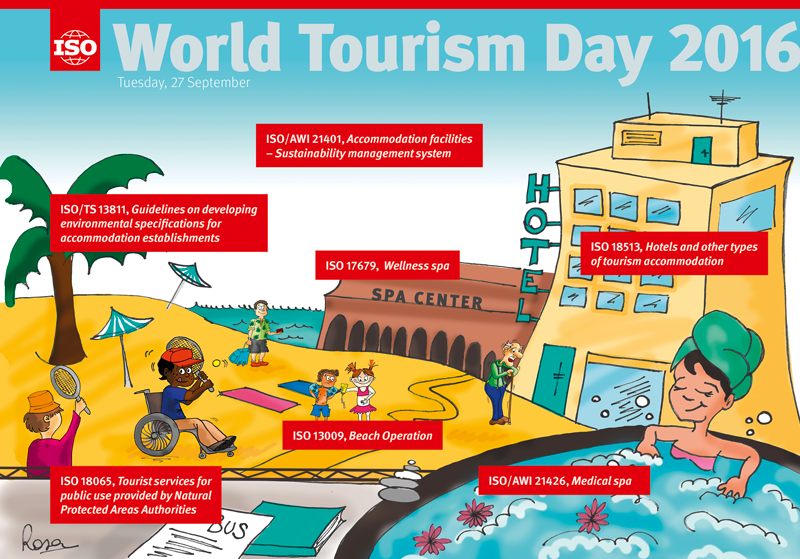According to the United Nations World Tourism Organization (UNWTO), as many as one billion people will find it harder to enjoy the rewards of tourism, such as the privilege of knowing other cultures, appreciating nature at its fullest and experiencing the thrill of embarking on a journey to explore new sights.
Today, 27 September, is World Tourism Day (WTD). This year’s theme “Tourism for all – promoting universal accessibility” is dedicated to creating environments that can cater for the needs of all, giving everyone the right to access leisure and tourism services on an equal basis.
In his WTD 2016 official message, UNWTO Secretary-General Taleb Rifai reminds us that “accessibility for all should be at the centre of tourism policies and business strategies, not only as a human right, but also as a great market opportunity”. ISO has many standards that can support this goal.
ISO standards developed by technical committee ISO/TC 228, Tourism and related services, set out guidelines and best practices that promote universal accessibility in tourism and enable travel industry service providers to reap the commercial benefits that flow from it. For example, ISO 13009, Tourism and related services – Requirements and recommendations for beach operation, raises the importance of making beaches accessible, with such amenities as toilets, showers or foot washes and a drinking water point adapted for people with specific needs. Access to the beach should also be facilitated by access ramps and boardwalks, with direct access to the water, if at all possible. Beaches that are more accessible are believed to attract more holidaymakers, including visitors with special needs and their families.

Meanwhile, ISO 14785, Tourist information offices – Tourist information and reception services – Requirements, provides a number of recommendations to make tourist information offices (TIOs) accessible to all. TIOs should consider aspects related to mobility (entrance, parking and barrier-free rooms) as well as hearing and sight access (large print or Braille copies) in their buildings and the information material they disseminate. They should also ensure there are signs in areas near the principal access that are clear, visible and concise and do not represent an obstacle for free circulation. What’s more, tourist offices should provide information that accounts for the needs of people with disabilities, such as a list of the best accessible hotels, activities and adapted transport, so that they can travel safely and independently.
Apart from the standards of ISO/TC 228, a number of other ISO standards address accessibility issues and help put tourism within reach of visitors with special needs. ISO 17049, Accessible design – Application of braille on signage, equipment and appliances, for instance, enables blind and visually impaired people to have access to information through the standardized usage of braille in many different parts of the world. Meanwhile, ISO 23599, Assistive products for blind and vision-impaired persons – Tactile walking surface indicators, helps ensure that tactile walking surface indicators provide standardized information internationally, helping blind and partially sighted visitors to get around easily and safely.
World Tourism Day is an annual event organized by the United Nations World Tourism Organization (UNWTO), which participates in ISO committees developing standards for tourism. This year’s official celebration will be held in Bangkok, Thailand, on 27 September 2016.

